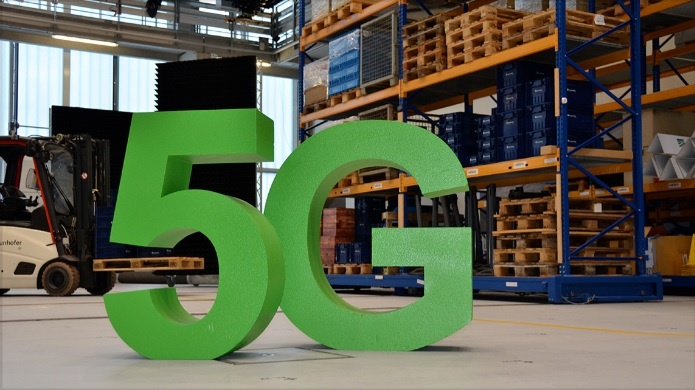This year, the Hannover Trade Fair was not held at the exhibition grounds as usual. In keeping with the concept of Industry 4.0, and because of the coronavirus pandemic, the 2021 Hannover Trade Fair was streamed as a digital edition featuring live chats and talks.
As part of the live stream, Fraunhofer IIS presented the basis for interactive and self-sufficient Industry 4.0 processes and smart mobility applications in collaboration with the Fraunhofer CCIT Research Center IoT-COMMS.
By coordinating positioning and communication systems, the 5G Bavaria Testbed for Industry 4.0 offers an ideal environment for the testing of industrial applications developed by manufacturing and mobile communications companies or by suppliers of positioning systems in practice-oriented usage scenarios. At multiple locations, it provides not only indoor but also outdoor environments for safe testing with the help of a cloud-native stand-alone 5G core network. The testbed also paves the way for the realistic mapping of production and logistics processes and the reproduction of process sequences.
With its smart positioning system and mobile radio anchor nodes, FlexLoc technology allows the positioning of tools, workpieces, and autonomous transport systems at all times. Full system performance can therefore be guaranteed even in the event of a new device combination and with mobile devices – and real-time transmission enables the system to adapt automatically, supporting quality assurance and resulting in transparent maintenance processes. Moreover, an app provides production staff with real-time feedback, and autonomous machine learning paves the way for continuous improvement.

